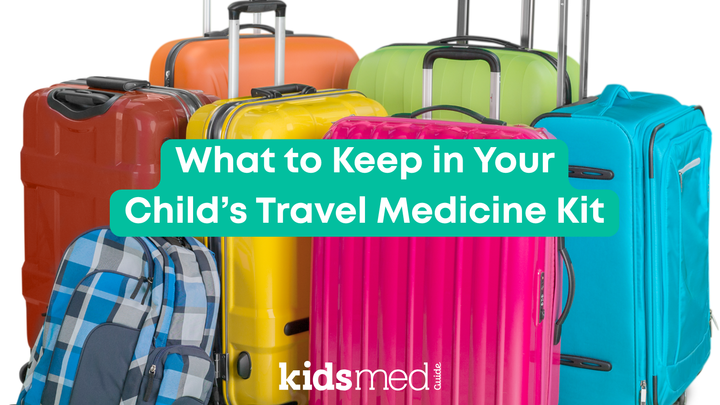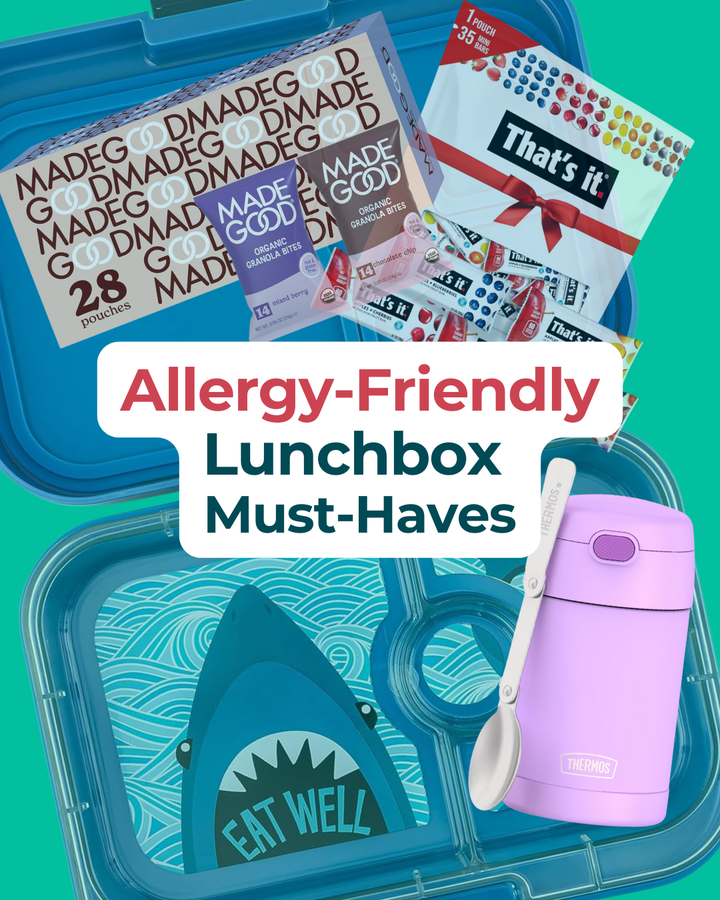How to Organize Medications for School and Sports
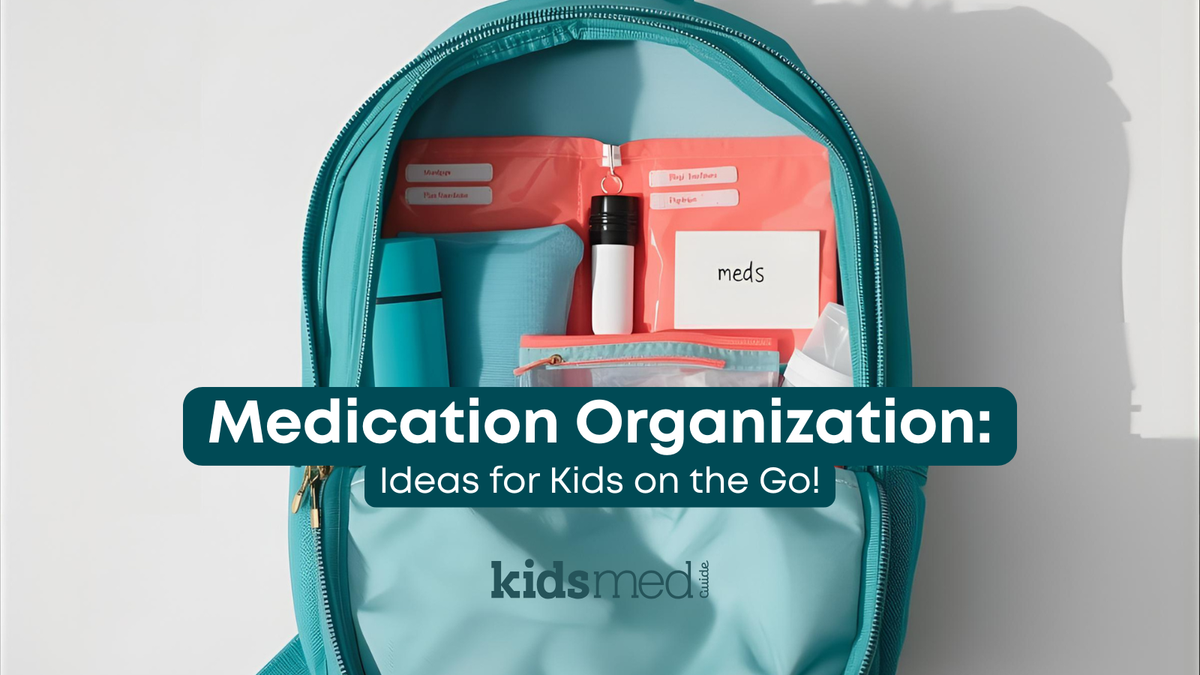
Every school year seems to start with a pile of forms, 16 different color-coded folders, a long and oddly specific school supply list (Ticonderoga brand pencils only?!), and at least one mystery permission slip that arrives two weeks late. If your house is anything like mine, this mess of school stuff is all jumbled together with backpacks, sneakers, water bottles, and cleats.
For families that need to add “organize medications for kids” to their routine, it’s a whole new level of chaos! If you’re also packing EpiPens, inhalers, emergency meds, or daily pills for school and activities, keeping everything straight can feel like a parenting Olympic event. (It’s too bad they don’t give medals to moms. I mean, I definitely wouldn’t medal, but I might make the alternate list).
Why Organized Medication Matters
When it comes to organizing medications for kids, chaos isn't your friend. That’s unfortunate news for us Type B parents. Kids often move between classes or dash from the bus to the soccer field, and misplaced meds can pose a safety risk. Imagine an EpiPen buried under a pile of snacks or an inhaler left in the wrong bag. Not good.
Keeping medications organized ensures that urgent meds are accessible when needed, prevents dosing mix-ups, and makes life easier for your independent older children or caregivers of younger children. For older children with chronic conditions, good organization also encourages healthy habits for future healthcare independence, consistency, and self-management.
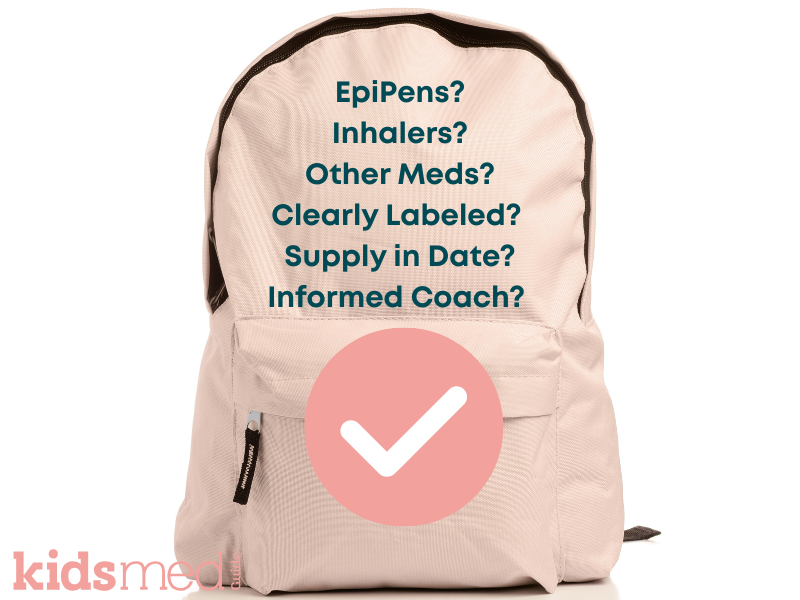
Essential Tools and Strategies for Organization
There’s no one-size-fits-all system for medication management for children. If you have a system that works well for your family, keep at it! If you need a little help staying on top of things, check out our top tips and recommendations.
Use clearly labeled pouches
For easy access while on the go, consider using transparent, labeled pouches. Separate medications by purpose or child. For example, Johnny’s inhaler is in a dedicated, labeled pouch, directly in his lacrosse bag.
This strategy will differ slightly depending on the number of medications you need to pack and your kids' ages (for example, whether you are staying at practice or dropping them off). However, generally, clearly label each pouch with your child’s name, medication name, and dosing instructions.
Prioritize medication safety! Always keep medication in its original childproof container. If you have young children, ensure it’s not easily accessible to them—but place it in a designated spot so adults know where to find it. For older kids, a clearly labeled pouch in a specific place in their bag makes it easy to locate when needed.
Our picks:
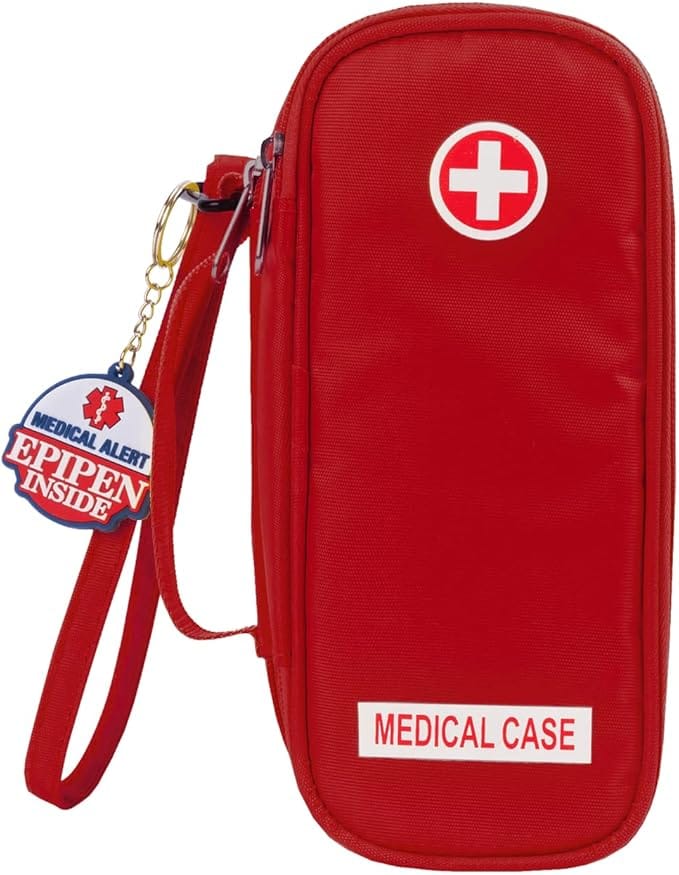


Keep temperature-sensitive meds protected
For medications like insulin or certain antibiotics, an insulated bag or cool pouch keeps them safe during long trips, days at sports camp, or hot practices.
Our picks:
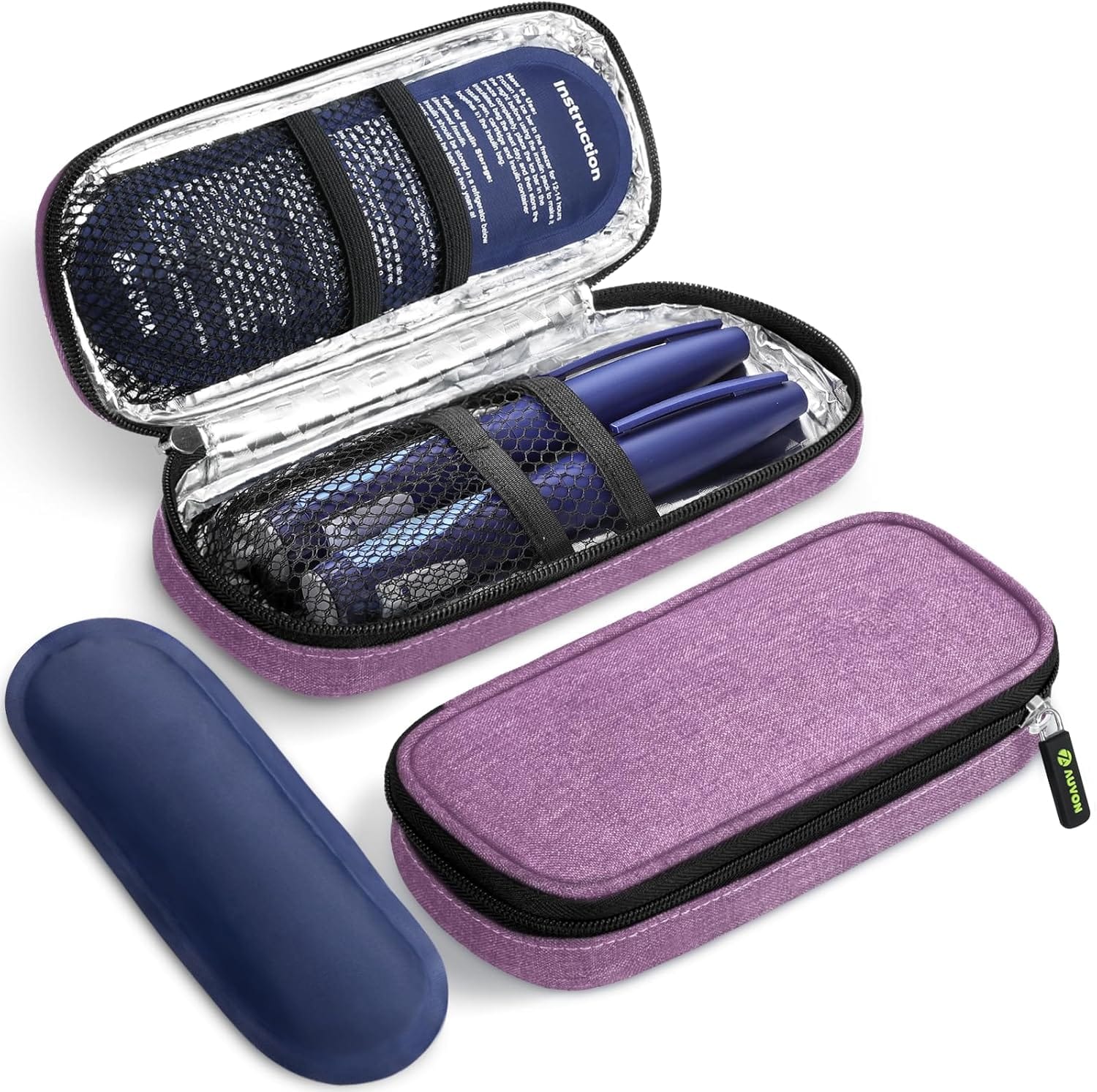

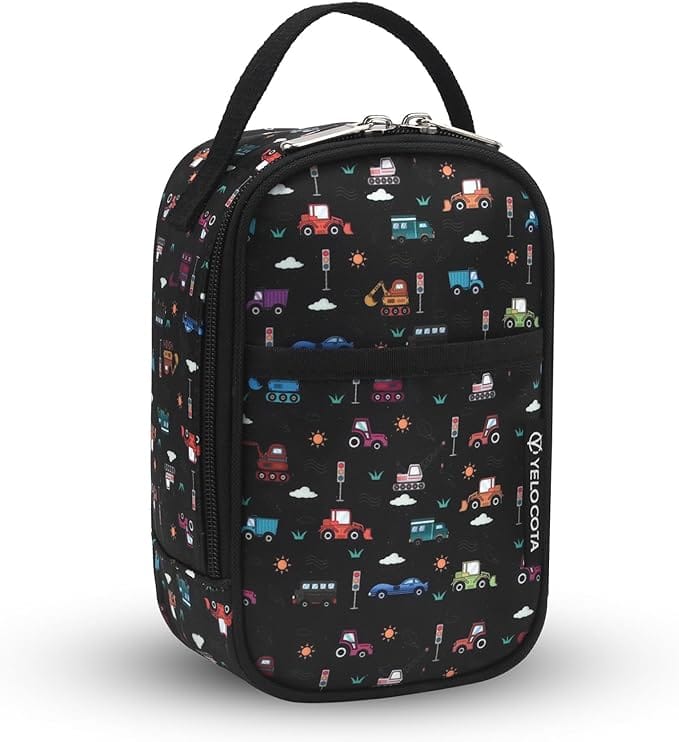
Dedicate a “go-kit"
For longer trips, like a family road trip, or if your teen is going on an overnight stay with a friend’s family or heading to a tournament far away, consider a travel medication case that can hold multiple items: Epipens, inhalers, spacers, routine daily medications, and any backup meds or doses. A large enough go-kit can also serve as a first-aid kit, keeping medication safety and first aid readiness all in one convenient pack.
Our picks:


Keep a backup set
If your child takes daily medication, ask your healthcare provider or pharmacist if an extra labeled supply can be stored at school or kept with the nurse at school or camp. This approach is much easier and more secure than having your child carry medication back and forth; in many cases, it may even be required by the school or facility.
Having a backup set of inhalers or EpiPens can also be convenient for kids who are frequently on the go to sports, clubs, or other activities. Keeping an inhaler in a clearly labeled pouch in their gym bag helps prevent forgetting to pack it each day.
Stay on top of school forms
Whenever your child starts a new medication, class, or activity, include medication forms in your initial checklist. Coordinate with the school nurse or activity leader if necessary. Planning reduces the chaos on the day of.
Tips for Safe Storage and Accessibility
When it comes to EpiPen and inhaler storage, visibility and accessibility matter. Emergency medications should always be stored in the same spot—whether it’s a nurse’s office, classroom cabinet, or a designated sports bag pocket.
If medication will be traveling with your child frequently (and tossed in the bottom of a backpack or sports duffel!), consider a hard-shell case to keep it protected.
Our pick:
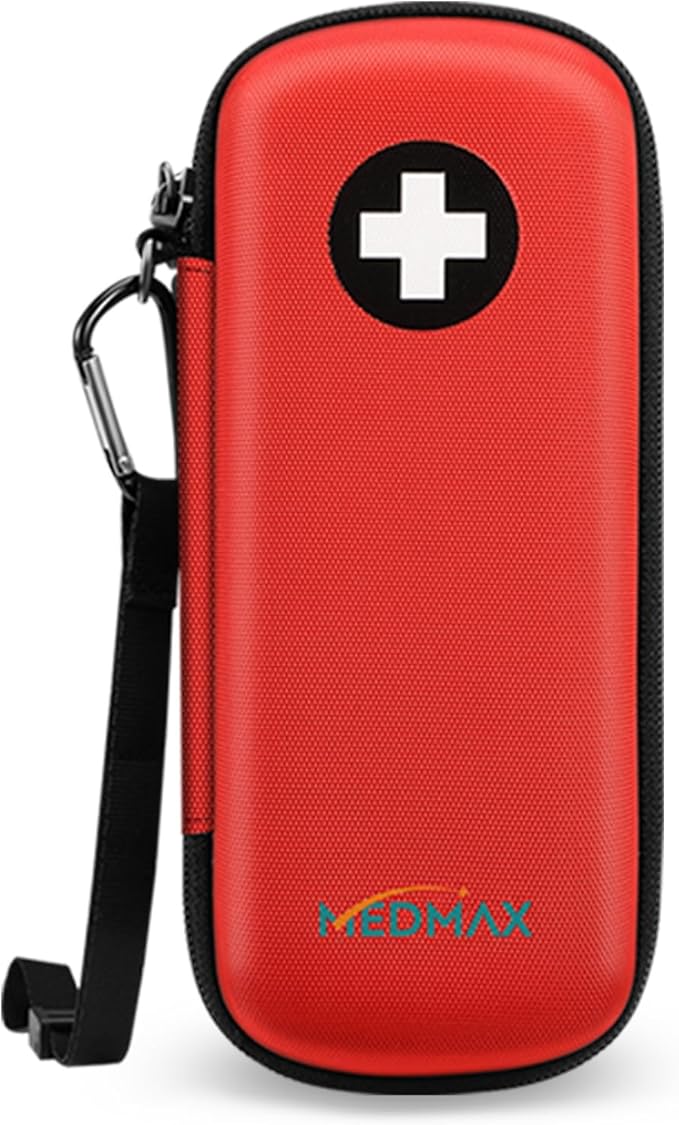
Make sure your older child, as well as teachers, school nurses, and coaches, know where medications are stored and how to use them if necessary. This also includes checking expiration dates and replacing items before they run out or expire (I’ve learned that lesson more than once!).
Depending on how fancy and organized you want to get, color-coding or labeling can also help—use bright tags or tape to differentiate between medications for each child or between daily and as-needed meds. A clear pouch with emergency meds and a large yellow info sticker will really grab someone’s attention in an emergency!
Teach kids early about the importance of emergency medications. Parents have the ultimate responsibility for their child’s health, but kids should practice independence too. Eventually, they will take over their own medical care, and practicing medical responsibility will be very beneficial.
And finally – yes, you should pack snacks too. Always pack the snacks.
Conclusion
Getting into the habit of organizing medications for kids on the go will save you a lot of stress in the long run! Create a dedicated system to ensure needed medications are accessible whenever your child travels, goes to sports, or participates in activities. For school, work with your nurse or teacher to ensure medications are stored safely.
Plus, when everything is neatly labeled and in its place, you'll look like you have it all together (even if your coffee’s cold, your sunglasses are missing, and your kid only has one sock on).
Frequently Asked Questions
What is the best way to carry medications for school and sports?
Keep medication in its original container. Place the medication in clearly labeled pouches or containers that fit inside backpacks or sports bags. Consider a transparent pouch. A dedicated “med kit” makes it easy to find items quickly and keeps everything clean and secure. Work with the school nurse for storing medications at school.
How can I keep EpiPens or inhalers safe yet accessible while on the go?
Consider storing them in dedicated pouches or cases. Use a hard shell case if there is danger of it being crushed. Label the case with your child’s name, dose, and instructions. Make sure adults and older children know exactly where they are stored, and avoid overstuffing bags that could crush the devices. Keep the medication pouch or case in a specific spot inside your bag.
How often should I check medication expiration dates?
Check medications every few months, especially at the start of each school term or sports season. Consider a simple schedule like the first of each month or the beginning of each season. Expired meds can lose effectiveness.
Should I inform school staff or coaches about my child’s medications?
Absolutely. Provide written instructions, doctor notes if required, and ensure staff know how to use rescue medications. Schools and camps often have strict medication policies. Work with your nurse or representative to make sure medication is stored safely and administered properly.
What are the tips for teaching children to manage their own medications safely?
Start small! Teach them how to recognize their medication, when to take it, and how to speak up if something feels off. Keep medication safety principles in mind. For young children, medication should be stored out of reach. Always keep medicine in its original childproof container. Gradually encourage independence as they grow.

